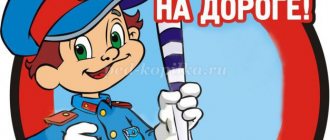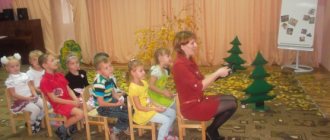Creating a base for reading literacy
Agree, there is some difference between the ability to read and the ability to read thoughtfully
.
Just like between the ability to write and the ability to write correctly
. We, adults, are faced with huge amounts of information every day that we have to analyze and classify. It becomes increasingly difficult to immerse yourself in the content of texts. Children are in exactly the same situation, and in the future the flow of information will only grow. Against this background, the term “meaningful reading” has become widespread in recent years. However, reading without comprehension is, in principle, an oxymoron; it does not happen. Any learning to read must be associated with an understanding of meaning.
Many parents are acutely concerned with the question: when should they start teaching their children to read and write: before school, or should they leave it to primary school teachers?
Experts say there is no clear answer to the question. There are factors such as the characteristics of the child himself and the characteristics of the group in which he studied before school. There is a belief among parents that a child who enters first grade with the ability to read will be more successful than children who cannot read. Of course, at first it will be easier for him in many aspects. Well, then the situation will unfold depending on how exactly preschool education took place.
Today there are many methods for early learning to read and write. At the same time, some of them are aimed at immediate results: to demonstrate to parents that the child has acquired the required skill. But what happens next? How will reading and spelling literacy develop? A solid foundation is required.
“Until we form the prerequisites, full-fledged reading instruction will not begin.”
Marina Kuznetsova Doctor of Pedagogical Sciences, Leading Researcher at the Center for Primary General Education of the Federal State Budgetary Institution "Institute for Education Development Strategy of the Russian Academy of Education"
Prerequisites include: auditory perception, visual perception, spatial concepts, coherent speech, developed motor skills, ability to work with multiple objects and classify them. The authors of the “ABC for Preschoolers” notebooks, published in the popular series of manuals “Preschool Time” (edited by N. F. Vinogradova), were guided by these prerequisites. The alphabet implements the method of Lydia Zhurova, based on the method of Daniil Elkonin. Exercises using notebooks lead to a specific result - the creation of prerequisites and an introduction to reading.
ABC for preschoolers. We play and read together. 5-7 years
Training using three textbooks in the set (“Playing with sounds and words” - notebooks No. 1, 2, “Playing and reading together”) creates in children an interest in further learning their native language, strong reading and literate writing skills. The purpose of the “Let's Play and Read Together” guide is to lay the foundations of reading and writing skills. In the manual, children get acquainted with the letters denoting the consonant sounds zh, sh, shch, x, ts, ch, letters soft sign, hard sign. A different application contains cards with letters for all consonant sounds.
Buy
Notes on teaching literacy in the senior group “Introduction to the alphabet”
Brief description of the document:
Notes on teaching literacy in the senior group “Acquaintance with the alphabet” Objectives: introduce the alphabet; develop the ability to read words with familiar letters; practice writing letters in print in a notebook. Equipment: plastic letters on magnets, cards with words and letters, workbook, pen. Contents of organized educational activities 1. Organizational moment. Invented by someone Simple and wise, Say hello when you meet! - Good morning! - Good morning to the Sun and the birds! - Good morning! Friendly faces! And everyone becomes kind and trusting! Good morning lasts until evening. The one whose name begins with the letter A will sit down, now the one whose name begins with the letter D, O, M, P, S, F, S, L will sit down. 2. Main part Methodological techniques A story about the emergence of the alphabet. The Russian alphabet was created by the monks Cyril and Methodius. Who are monks? They knew the Greek and Latin alphabets very well, so many letters of the Russian alphabet are similar to the letters of these alphabets. And they first named it in honor of the monk Cyril - “Cyrillic”. The modern Russian alphabet comes from the Cyrillic alphabet. The word “ABC” exists only in the Russian language, and it comes from the first letters of the Cyrillic alphabet – “AZ” and “BUKI” - AZBUKA are letters only in the Russian language, arranged strictly in order. There are many different alphabets in the world: Latin, German, French, English... An alphabet is the letters of a language, arranged strictly in order. Most alphabets come from ancient picture writing. People drew pictures and conveyed what they wanted to talk about. Getting to know the alphabet and memorizing it. The modern Russian alphabet consists of 33 letters, which are in strict order: Listen to the poem and try to remember in what order the letters are: ABC song (B. Zakhoder) Thirty-three sisters, Written beauties, Live on one page, And are famous everywhere ! They are rushing to you now, Glorious sisters, - We really ask all the guys to make friends with them! A, B, C, D, D, F, F They rolled up on the hedgehog! Z, I, K, L, M, N, O Climbed out the window together! P, R, S, T, U, F, X They saddled the rooster, - C, Ch, Sh, Shch, E, Yu, I - Here they are, friends!.. Meet them, children! Here they are, standing side by side, It’s very bad to live in the world for those who don’t know them! Try to repeat the letters of the alphabet with the help of this poem (3 - 4 children). Look carefully at this picture and tell me which letters the author of the poem forgot about (E, J, Y, b, b). Now I know that you have memorized all the letters of the alphabet. Now I’ll check how well you know all the sounds and letters. Let’s just rest and do the exercise first. Physical education A, Be, Ve, Ge, De, E, Yo, (walking in place) Know your place! Zhe, Ze, I, Y, Ka, eL, em, (jumping on the right leg) Remember who is behind whom! eN, O, Pe, eR, eS, Te, U, (jumping on the left leg) Stand together, all in a row! eF, Ha, Tse, Che, Sha and Shcha, (turns to the sides) Place yourself slowly! Hard sign and soft sign, (squats) Stand side by side, like this! Hurry up E, Yu, Ya! (walking in place) The whole family is here! Game “Guess the Word” The first letter of this word is in the alphabet after the letter B, the second is behind the letter N, the third is behind K, the last is behind the letter Y. (Wolf) The first letter of this word is in the alphabet before the letter L, the second is before letter P, third before T, fourth before B. (Spit) Game “Letters around me” Ask the child to look around the room and name all the objects that surround him, but only in alphabetical order. For example: A - watermelon, B - jar, C - hanger, D - curtains. Reading words and small sentences. Finger gymnastics I am a cheerful person, I walk and sing. I am a cheerful person, I really like to play. I’ll rub my palms hard, I’ll twirl each finger, I’ll say hello to him strongly, and I’ll start stretching. Then I’ll wash my hands, fold them finger by finger, lock them and keep them warm. Typing words under dictation from the teacher in a workbook. 3. Final part 1. Summing up the topic. General questions on the topic. What did you do in class? What tasks did you perform? What new did you learn? 2. Reflection. Did you like the lesson? What did you like about the lesson? What difficulties arose during the lesson?
Diagnostics: actions of the child that mean he is ready to learn to read and write
- Highlights sounds in words and poems that are often found there.
- Selects words according to a given phonemic feature (Name words starting with “c”, name words starting with “a”).
- Models words of 3-5 sounds and makes their sound analysis.
- When pronouncing a word, it correlates with the pattern of its sound composition (Compare what you see with what you hear).
- Changes the sound composition of a word, replaces sounds (Try replacing the first sound in the word “poppy” with “r” - what happens?)
- Selects words that are opposite and similar in meaning.
- Describes objects, selecting definitions of qualities and properties.
- Writes a short story on a topic that is relevant to you.
- Composes a story based on pictures, a series of plot pictures.
- Joins the group conversation and asks questions.
The requirements imposed by elementary schools on the level of knowledge and skills of future first-graders are becoming higher every year. When going to first grade, a child should often not only know letters, but also be able to form words from them. In this regard, many modern parents have natural questions: “At what age and what is the best way to start teaching your child the alphabet?”
At what age should a child start teaching letters?
There are different opinions on this matter, but the general rule is this: the earlier you start, the easier it will be for your child to master this science. The main thing is that parents act wisely in their desire to stimulate the early development of the baby. The load must be adequate to the age or go with a slight advance, affecting the zone of proximal development. To help parents, a huge amount of didactic material has been created, aimed at each of the children's ages.
Experienced psychologists and teachers have developed many techniques, the use of which will allow a child to learn letters and start reading without much difficulty.
Early learning of the alphabet, and then reading, is not just a fad. The process of learning letters and combining them into words is interconnected with the general cognitive development of a person. Speech, thinking, concentration and stability of attention, motor functions - all these elements of the child’s psyche develop based on previous experience in close interaction with each other. Thus, when children study the alphabet, a comprehensive formation of mental functions necessary for life occurs.
From birth to 2 years.
Some developmental methods are designed to start classes with a child from birth. A newborn child is not just an organism with a set of unconditioned reflexes. When a little person is born, he already has a psyche and feels the need for new experiences that stimulate the development of brain structures. During this period, the child is as open as possible to receiving information, and this feature was precisely used by the authors of methods aimed at early learning to read. Of particular importance here is close communication between the child and mother - interaction during developmental games, tactile and auditory contacts. Only thanks to this symbiosis does the early development of the baby become possible.
The method of teaching children to read whole words, bypassing the phase of syllable-by-syllable reading, deserves attention. Regular classes on this author's development will contribute to the formation of automatic reading skills. It's hard to believe, but your child can learn to read before he speaks! The principles of natural development are used here: after all, no one explains to children the rules of the Russian language, when they begin to learn spoken language - the child’s brain develops and, based on its experience, independently forms the necessary semantic and logical connections. The same can happen with reading if an adult systematically and regularly works with a child as part of a didactic course. The main thing is not to miss the moment and follow the recommendations of the authors.
2 – 3 years.
At this age, perception, speech-motor functions, emotions, thinking and memory continue to actively develop. It is very easy to interest a child in something, but attention is still mobile and unstable. Learning the alphabet during this period can begin with all kinds of cards and cubes with letters. A prerequisite is to provide information to children in a playful way. Play is the leading activity of children from birth until they begin their education in first grade. It is through play that a child receives information about the world around him; it is through play that his development occurs. In early childhood, abstract symbols such as letters alone will not arouse the child's interest. For this to happen, he needs to be attracted to the game - bright, colorful, with visual elements and large details. For children of this age, it is important not only to see everything, but also to try it by touch and turn it in their hands. These age features must be taken into account if you decide to start teaching letters with your baby. Images of letters can be included in the game implicitly, and the sound of each symbol can be named and pronounced.
4-5 years.
The concentration of attention at this age stage is already higher than before, and many children can already listen intently to an adult for seven to ten minutes. During this short period of time, you can give the child information and see that in many cases he perceives and understands what you want to convey. This can only be achieved by maintaining interest. The main task of parents is to make sure that the process of introducing the baby to letters is colored with positive emotions for him. This is one of the conditions for the formation of correct motivation for learning. At the age of 4–5 years, the child begins to need role-playing games. He willingly tries on various images and experiments with social roles. This is the most important stage in a child’s development and knowledge of the world around him. And this feature of age can also be used when teaching the alphabet. For example, play school with your children - this will arouse keen interest and contribute to rapid development.
6-7 years.
Senior preschool age is a period when the child, in most cases, according to physiological and mental indicators, is already ready for learning, however, one must not forget that he is not yet a first grader, but is only preparing for this new stage in his life. If your child has no interest in the learning process, and you just can’t get your child to sit down with a copybook or primer, then you just need to change your approach.
There are many educational games for learning the alphabet, in which your child will receive information not in a boring and tedious way, memorizing incomprehensible icons, but with interest and immersion in the process itself. This is how you will develop your child’s readiness for school.
Lesson notes on the Russian language, 1st grade. Russian alphabet, or ABC. School of Russia
Russian language lesson for 1st grade on the topic “Russian alphabet, or ABC”
Objectives: to introduce the Russian alphabet and explain its meaning; develop the ability to use the alphabet. Planned results : students will learn to correctly name letters in alphabetical order.
Lesson progress
I. Organizational moment II. Updating knowledge Test (The teacher can use tasks from manuals (see KIM, test 5 on pp. 22-25; TT, test 3 on pp. 21-27; PKR, tasks nas. 33-36).) III. Self-determination for activity - Guess the riddle. On the page of the ABC book Thirty-three heroes. Every literate person knows the sages-heroes. (Alphabet.) - Guess what will be discussed in class today. (About the alphabet.) IV. Work on the topic of the lesson 1. Introduction to the alphabet (Before the lesson, the teacher distributes spelling dictionaries to the students.) - Guess the riddle.
The living castle grumbled and lay across the door. (Dog.) - What can you say about this word? (This is a word from the dictionary.) - Find this word in the spelling dictionary that is on your desk. What page is it on? — Was it easy for you to find him? — Could this task be completed faster? What do you need to know for this? (You need to know the alphabet.) (The teacher hangs a poster with the alphabet on the board.) All words in the dictionaries are arranged in alphabetical order. (You can show other dictionaries.) - Where else is the alphabet used? (Books in the library and student forms are arranged in alphabetical order, the list of students in the magazine is compiled in alphabetical order, in the hospital patient cards are in alphabetical order, etc.) - So what is the alphabet? (Letters arranged in a certain order.) - Has he always been the way you see him now? (Children's answers.) Material for teachers
The historian Herodotus wrote that the ancient Greeks learned writing from the Phoenicians.
Indeed, even the names of the Greek letters themselves are Phoenician words. For example, the name of the letter “alpha” (A) comes from the Phoenician word aleph - bull (the original shape of this letter resembled the head of a bull). The name of the Greek letter "beta" comes from the Phoenician word bet - house (originally this letter was a simplified drawing of the plan of a house). The word alphabet itself is essentially a combination of the Phoenician words aleph and bet. The letters in the Phoenician alphabet were arranged in a certain order. This order was also adopted by the Greeks. The Phoenician alphabet was the ancestor of not only Greek, but also Arabic, Hebrew and other alphabets. It is more convenient than any hieroglyphs. But the Greek alphabet is even more perfect. In it, the signs no longer indicated syllables, but letters. It formed the basis of the Latin alphabet, and that, in turn, formed the basis of all Western European ones. The Church Slavonic alphabet, compiled by the brothers Cyril and Methodius, came from the Greek alphabet - the Cyrillic alphabet. Under Peter I, the Church Slavonic alphabet was simplified, and an easier-to-read civil version appeared, which is still used in Russia with minor changes. 2. Work according to the textbook Ex.
1 (p. 52) - Read. — How many letters are in the Russian alphabet? (33.) - Read the names of these letters and try to remember. — To make it easier to remember the alphabet, we will sing it. Do you remember the song about the grasshopper? There was a grasshopper sitting in the grass (twice), just like a little green cucumber. It is to this tune that we will sing the names of the letters. (Write on the board.)
— The song needs to be sung line by line.
Pause at the end of each line. There is no need to pronounce the word sign. — Put dashes in your textbooks with a pencil in the places where we pause. You will need to learn the alphabet at home. — Read information about the language. - What is the alphabet? Ex.
2 (p. 53) - Read.
- Name the letters of the alphabet. —What are letters needed for? — How many letters are there in the alphabet? - Find letters in the alphabet that do not represent sounds. Ex.
3 (p. 53) - Read the sentence.
What sign is at the end of the sentence? - Read it expressively. — Explain why you need to be able to read well. 3. Vocabulary work (The teacher can use the manual (see OS, p. 65).) - Find the “hidden” word. VRPYADHOROSHOACHI - Write the word good
in your notebook.
Place stress and emphasize unstressed vowels. Remember the combination -ORO- in this word. - Come up with a sentence with this word. 4. Work according to the textbook - Read on p. 53 about the origin of the words alphabet and alphabet. -Where did these words come to us? V. Physical education minute Pinocchio stretched, Once - bent over, Two - bent over, spread his arms to the sides. Apparently I didn't find the key. To get the key, we need to stand on our toes. VI. Consolidation of the studied material 1. Work from the textbook Ex.
4 (p. 54) - Read.
-What did you notice? —Are all the letters of the alphabet written down? — Which letters are out of place? - Complete the task. Ex.
5 (p. 54) - Look at the pictures.
- Name the letters correctly. - Why do you think they are located on different balloons? (The letters are grouped depending on how their names are pronounced.) - Read the last task. Do it yourself. Ex.
6 (p. 55) - Read.
—Are all the letters named correctly? Who made a mistake? - Name these letters correctly. - Read the last task. Do it yourself. 2. Game “Find your place” (Students receive letters from a split alphabet. At the teacher’s command, they must stand in alphabetical order.) 3. Completing tasks in the workbook Ex.
1 (p. 26) (Independent completion of the task.) - Read the alphabet.
Ex.
2 (p. 26) - Read.
Complete the task. - Read the sentence you wrote down. Ex.
3 (p. 27) - Look at the drawing.
Complete the task. - Read it. (Welcome to forest school!) Ex.
4 (p. 27) - Read the riddles.
Complete the task. - What letters did you write? (Sh, p.) (The teacher can use tasks from manuals (see RT, tasks 1-3 nas. 22, 23; SU, tasks nas. 25; Tr., tasks nas. 23, 24).) VII . Reflection - What is the alphabet? — How many letters are in the Russian alphabet? - Who has already memorized the alphabet? - Who else needs a little training? - Evaluate your work in class. VIII. Lesson summary - What new did you learn during the lesson?
We recommend watching:
Lesson notes on the Russian language, 1st grade. School of Russia. Language and speech. Their significance in people's lives Lesson notes on the Russian language, 1st grade. Offer. School of Russia Lesson notes on the Russian language, 1st grade. Dialogue. Kanakina. School of Russia Lesson notes on the Russian language, 1st grade. School of Russia. Sounds and letters, 1 lesson
Similar articles:
Lesson notes on the Russian language, 1st grade. Consonant sounds. School of Russia
Lesson notes on the Russian language, 1st grade. Hard and soft consonants
Lesson notes on the Russian language, 1st grade. Spelling letters denoting paired consonant sounds at the end of words
Lesson notes on the Russian language, 1st grade. Letter combinations CHK, CHN, CHT. School of Russia
Lesson notes on the Russian language, 1st grade. Capital letter in words. School of Russia









